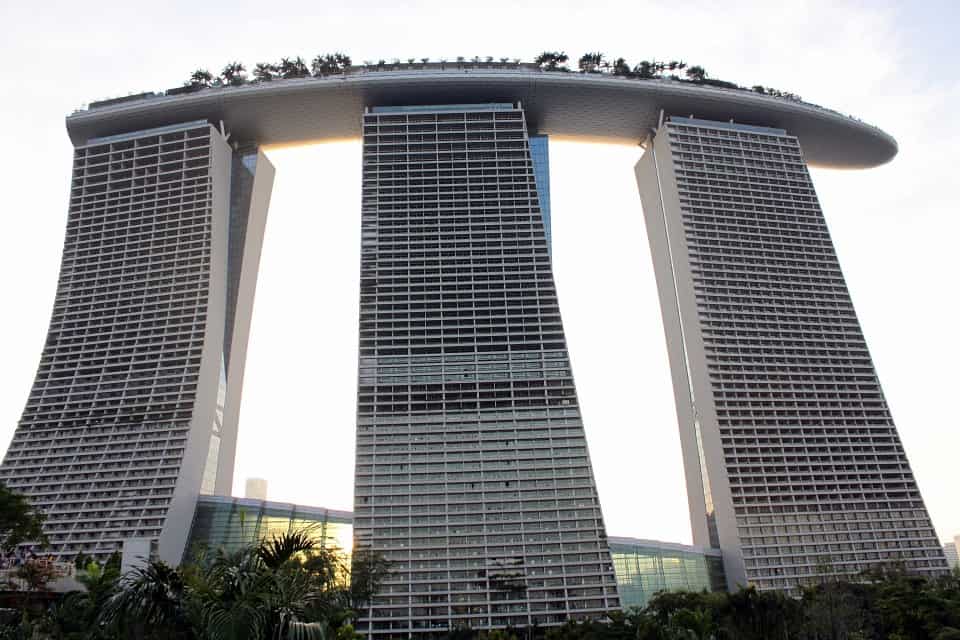A cheatsheet on our economy for all you clueless working adults
Singapore narrowly avoided a technical recession in 2016, thanks to an unexpectedly strong fourth quarter growth. This was much in part thanks to a boost in the manufacturing and services sectors, both of which make up a major part of our economy.
Despite the good news, last year also marked the slowest GDP growth in a year since 2009, when the global financial crisis hit our economy. Experts also have reason to believe that our economy isn’t the clear just yet, with the health of global trade remaining hazy and the United States on course to implement a more regulated stance on international trade.
Aside from international trade, there are also several pressing issues that might affect Singapore in 2017. Here are the four key pieces of economic data you need to know for 2017.
Rising Interest Rates
It’s known that the Monetary Authority of Singapore (MAS) ties the interest rates in Singapore close to the Federal Reserve’s rates. The Fed is expected to raise interest rates as many as three times in 2017 – due to an expected stimulus package by the US government under President-elect Donald Trump.
Rising interest rates would dampen the outlook for the already-weakening Singapore dollar, which hit a 7-year low against the US dollar, as reported by CNBC, the lowest number seen since the global economic crisis. To add insult to injury, analysts are predicting that Asian currencies will be down across the board for 2017.
Borrowing costs are also expecting to go up, which would translate to higher rates for home and business loans. This, in turn, might damage both household and business spending, which would hurt the already cooling housing market.
Pessimistic SMEs
According to the recently released index compiled by the Singapore Business Federation (SBF) and DP Information Group, small and medium enterprises (SMEs) are not optimistic about their business prospects for the first six months of 2017.
The index, which measures the outlook amongst SMEs at a six-month interval, fell to 49.8 points, indicating an overall “negative” outlook. This is the first time in the index’s seven-year history that it has fallen below 50 points.
The reason for the decline? Businesses have seen their turnover and profit margins slowly fall through the last six months, and are expecting 2017 to continue the trend. There is, however, a sliver of hope for SMEs, with the anticipation that the upcoming 2017 budget will be able to alleviate their struggles.
The Shipping Industry
2016 was a terrible year for the global shipping industry, with some key players calling it “historically as the worst year ever.” From an extraordinary number of mergers and acquisitions, like the buyout of Neptune Orient Lines, to the demise of South Korea’s Hanjin Shipping Company, which disrupted global trade and left goods stranded, it was nothing like we’ve seen before.
Much of this can be blamed on free-falling oil prices in early 2016. Although prices are gradually recovering as we speak, the damage from the lowest prices for oil in over a decade had been done. Despite low oil prices being a positive for consumers, it spelt disaster for oil and gas companies, as it suddenly made oil and gas production uneconomic. As such, the shipping industry, which derives much of its income from the transport and development of those goods, has also been adversely affected.
With Singapore’s position as a popular maritime hub, we were certainly not spared by the ongoings of the industry. With the unpredictability of the global economy as a whole, analysts are not expecting better days for the shipping industry anytime soon.
Employment Woes
The employment outlook in 2017 does not look rosy, at least not according to a report by the Manpower Group. The US-based firm states that only 15 percent of employers are looking for new hires in Q1 2017, with 7 percent likely to make job cuts. This is in line with the slowing of growth and SMEs’ pessimistic outlook.
In spite of the data, a few segments of the economy have been perking up as of late and are continuing to gain traction. Sectors such as manufacturing and information technology are still going strong, with the government estimating that Singapore is short about 30,000 IT professionals this year.
Rising Vacancy Rates
As Singapore’s stagnating economy continues to keep consumers and investors at bay, commercial properties are hitting records left and right – record high vacancy rates, that is.
A report for Q3 2016 noted that mall vacancy rates hit 8.4%, the highest rate since September 2016 despite falling rental rates. This is much in part due to the increase in retail space available, however, it is also a good reflection of the economic times we’re in. As consumers move online for cheaper goods and better convenience, brick-and-mortar stores are struggling to keep up. As 2017 continues to chug along, analysts are expecting more of the same.
Similar to retailers, office rentals are also suffering from high vacancy syndrome. Much like retail space, vacancy rates are still on the rise in spite of falling rental prices. Experts place the blame on oversupply, which is saturating the market, as tenants move from older buildings to shiny new skyscrapers. Rent prices are expected to remain soft in the following months, as landowners try to fill up space as best as they could.
However, all this does translate to good news for new tenants looking for retail and office space. Some analysts have predicted a “watershed” year for property, as the economy recovers slowly, and more businesses get up and running.



















